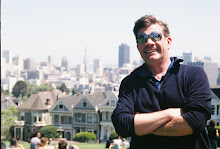JAN 27 SELFIE DEATHS SOAR WORLDWIDE
There’s a new killer out there…and we here at the DUNER BLOG are here to warn you. This menacing condition strikes people of all ages, but preys on the young and stupid. It kills in a variety of ways: Drowning, electrocution and dismemberment. Worse yet, there is no antidote, no known cure for this worldwide epidemic. Yep, we’re talking about SELFIE DEATHS, which happen when people lose their lives in search of the ultimate photo.
Let’s look at the numbers. Last year, 127 people died while taking dangerous photos. A quarter of these occurred in the quest for the ‘Group selfie,’ and multiple people lost their lives. Three quarters of the victims are men and 68% are 24 years old or younger. But here is the scariest statistic: The first reported selfie death EVER was in March of 2014. That’s not even three years ago!
Here’s a curious item as well: More than half (76 total) occur in the nation of India. The United States tallied the second-most deaths (nine), tied with Pakistan. Next up is Russia, China and the Philippines, with seven, six and five fatalities. Why such disparity? Well, first of all, Indians have the most cell phones—nearly a billion. Next, add in the two worst Group Incidents happened here: One on the Ganges River and another on Lake Nagpur. These two alone accounted for 14 deaths. But it’s not just the Indians themselves. The last death was a Japanese tourist who fell at the Taj Mahal.What would Alexander Graham Bell think? It would be difficult to describe to him the inexplicable and overpowering lure of that perfect selfie. See, it’s not just enough to go to Pamploma, Spain to see the Running of the Bulls. So a man was gored while posing next to an angry bull. You can’t just visit Old Faithful Geyser in Yellowstone. So a Belgian woman died after 85% of her body was scalded. So remember, if you make it to Machu Picchu or Niagara Falls, try to keep your balance and wits and don’t focus on your social media fantasy shot.
















